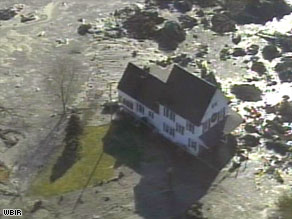
You can’t out-irony real life. The Tennessean has the story:
TVA is investigating a leak from a gypsum pond at its Widows Creek coal-burning power plant in northeastern Alabama …
Seriously, Widows Creek coal plant? What PR guy thought that up? The same genius behind Frosty the Coalman, Clean Coal Night, and Deck the Halls with Clean Coal?
TVA says the leak has stopped, but not before “some materials flowed into Widows Creek.” At least they won’t have to change the creek’s name. The story continues:
Gypsum is a byproduct of coal-burning power plants when “scrubbers” are added that use limestone spray to clean air emissions. This pulls sulfur dioxide from the emissions …
Tighter air emissions controls result in additional waste byproducts. Gypsum can be used in building materials.
As always, the enviros are really to blame. If it weren’t for their pesky laws, the pollutants would be in the air where they belong:
Scott Hughes, spokesman for the Alabama Department of Environmental Management said, “The only thing we’ve got right now is that there was a release from a gypsum treatment operation.” Gypsum can be sold for use in wallboard, but markets have been slow and it, like more standard ash, can build up in waste ponds.
“We’re in the process of gathering more info and getting a full report.”
Kingston is the scene of a TVA ash pond that ruptured: Early on the morning of Dec. 22, more than a billion gallons of sludge flowed out of the pond, damaging a dozen homes and creating environmental havoc along the Emory River.
The Widows Creek Fossil Plant is located on Guntersville Reservoir on the Tennessee River. It has eight coal-fired units and was completed in 1965. The plant consumes about 10,000 tons of coal a day. The ash from that coal was in the pond that broke there.
This post was created for ClimateProgress.org, a project of the Center for American Progress Action Fund.



